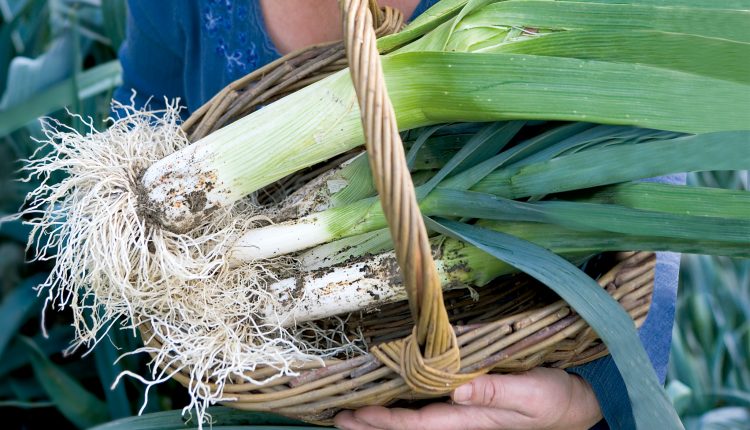Growing Leeks
Leeks are a fairly easy vegetable to grow and one of the mildest tasting vegetable in the onion family. Rather than producing a bulb, as most onions do, leeks are grown for their long stems with the white and pale green parts of the stems used in soups, stews and casseroles.
Sowing and Growing
Leeks prefer very rich well-drained soil that has well-rotted compost dug in and a great deal of moisture. They will tolerate both full sun and partial shade but dislike waterlogged conditions.
Leeks are started from seed. They can be directly sown into the garden in a well-drained weed-free location once the danger of frost has passed. They should be sown close to half an inch deep and half an inch apart. Seedlings should emerge in about 14 days as long as temperatures don’t get too cold at night. The seedlings will need thinning out to 4 inches apart then transplanting when they reach six inches or more in height.
Leeks can also be sown indoors in seed trays before being transplanted into the vegetable garden. Seedlings are ready to be transplanted when they reach six or more inches in height.
When selecting the site for the leek bed it’s worth remembering that leeks remain in the ground for many months with most varieties hardy enough to stand in the ground throughout the winter months. Leeks have a shallow root system and require firm ground. To transplant the leek seedlings make holes that are six inches deep and nine inches apart using either a thick dibber or a wooden stake. Carefully lower one leek seedling into each hole ensuring the roots do not stick out of the holes. Some gardeners trim the roots to one inch which makes this easier. Fill the holes with water and gradually over a few weeks the holes will fill with soil.
Blanching
To increase the white portion of the stems you will need to blanch the leeks starting in July or early August. This is done by drawing the soil up around the stems a couple of inches at a time, however, to stop the soil entering the stems and giving you gritty leeks a collar needs to be placed around the base of each leek stem before earthing up. Collars can be made from plastic pipe or brown parcel paper can be tied around the stems.
Harvesting
Leeks can be harvested as baby leeks or left to grow to maturity. Simply dig up the leeks as required for cooking leaving the remainder of the bed to carry on growing.

